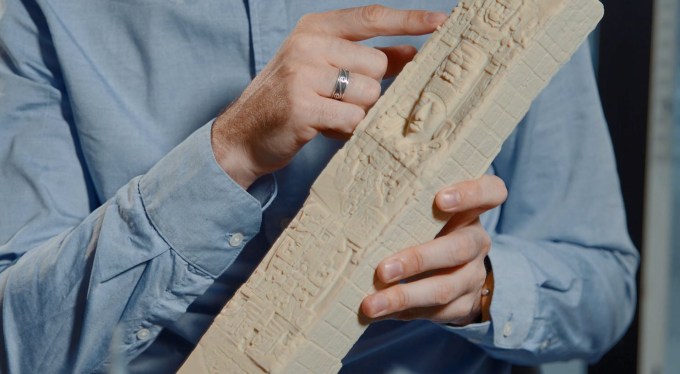Well, that was short-lived: Just 36 hours after Curve, the London fintech that lets you consolidate all of your bank cards into a single Curve card, re-instated support for Amex, the feature has once again been unceremoniously blocked by American Express. This time, however, the context feels very different from 2016 when the startup was barely off the ground, with Curve telling customers in an email this morning that it intends to “fight Amex’s decision with our full might”.
Going up against the deep pockets and dominant market position of American Express will undoubtedly be a “David and Goliath” battle, although, unlike two years ago, Curve is now backed by an array of investors that includes Connect Ventures and Santander. Arguably, the startup will have U.K. and EU payments and competition regulations on its side, too, although it is hard to predict with certainly if the U.K. regulators will use their full teeth in a situation like this and how they will interpret those existing U.K. and EU regulations.
Curve’s position, however, is clear: In the same email to customers, the company has called the move “anti-competitive” and says the move is “entirely disproportionate and discriminatory” to Curve. “U.K. payment regulations clearly state that Curve should be allowed to access the Amex payment network on a level-playing field with every other fee-paying and legitimate merchant,” write the startup.
However, American Express disputes this, telling TechCrunch it doesn’t have regulatory obligations to work “with Curve or any individual merchants”.
Meanwhile, the credit card giant has been busy briefing journalists that it ended its merchant contract with Curve for business reasons, following what looked like a successful beta test with a small number of joint customers. Perhaps the trial was too successful, with American Express telling me Curve customers were using Amex added to Curve in ways that were different to its regular customers, which, one could argue, is the whole point. To truly innovate, you have to offer something new. Something truly new, has to be different.
With that said, the method with which Curve was accessing the Amex network is a well-established one. Technically, Curve had signed a “merchant” contract with American Express, just like any other merchant and many existing e-wallet products, such as PayPal or YoYo Wallet, which, notably, haven’t been blocked. As part of the trial period, the fintech had also made changes to its own product to accommodate Amex, requiring customers to top up their Curve card in advance if they wanted to spend from their Curve-Amex wallet.
In other words, this was definitely not a “don’t ask for permission, ask for forgiveness” situation on Curve’s part. The two companies had been working together for months, and in talks for even longer, to get Curve back on the Amex network. A merchant contract had been signed. What changed at the 11th hour is unclear, although we can be sure this one has a long way to play out just yet.
American Express provided TechCrunch with the following statement:
We participated in a limited Curve beta test in which we explored enabling Card Members to load funds onto an e-wallet using their Amex Card in the Curve app. A very small number of Amex Card Members participated in the test. Based on the results, we communicated to Curve that we would not participate in the further roll out of Curve because of concerns related to the overall American Express Card Member experience. Subsequently we terminated our contract with them.
And here’s the full email sent out by Curve to customers, myself included:
Dear Steve,
We are extremely sorry that the top-up functionality of your Amex wallet is currently disabled.
Like thousands of other UK merchants, Curve has a valid merchant agreement to accept Amex payments into its e-wallet. However, on Tuesday evening, Amex decided to terminate this agreement and block all Amex transactions to Curve with immediate effect.
Amex has given no good or fair reason for their decision and we believe it is entirely disproportionate and discriminatory to Curve and all our (joint) customers. UK payment regulations clearly state that Curve should be allowed to access the Amex payment network on a level-playing field with every other fee-paying and legitimate merchant.
Rest assured that you can still spend the funds that you have already topped up to your existing Amex Wallets. If you have contacted us for support, we apologise for the delay in response and will endeavour to do so as soon as possible. We will update you as soon as we have any further information.
With your interests in mind, and our mission to deliver a truly innovative product, we intend to fight Amex’s decision with our full might. We believe financial freedom is the future and we are prepared to fight for yours.
Team Curve



